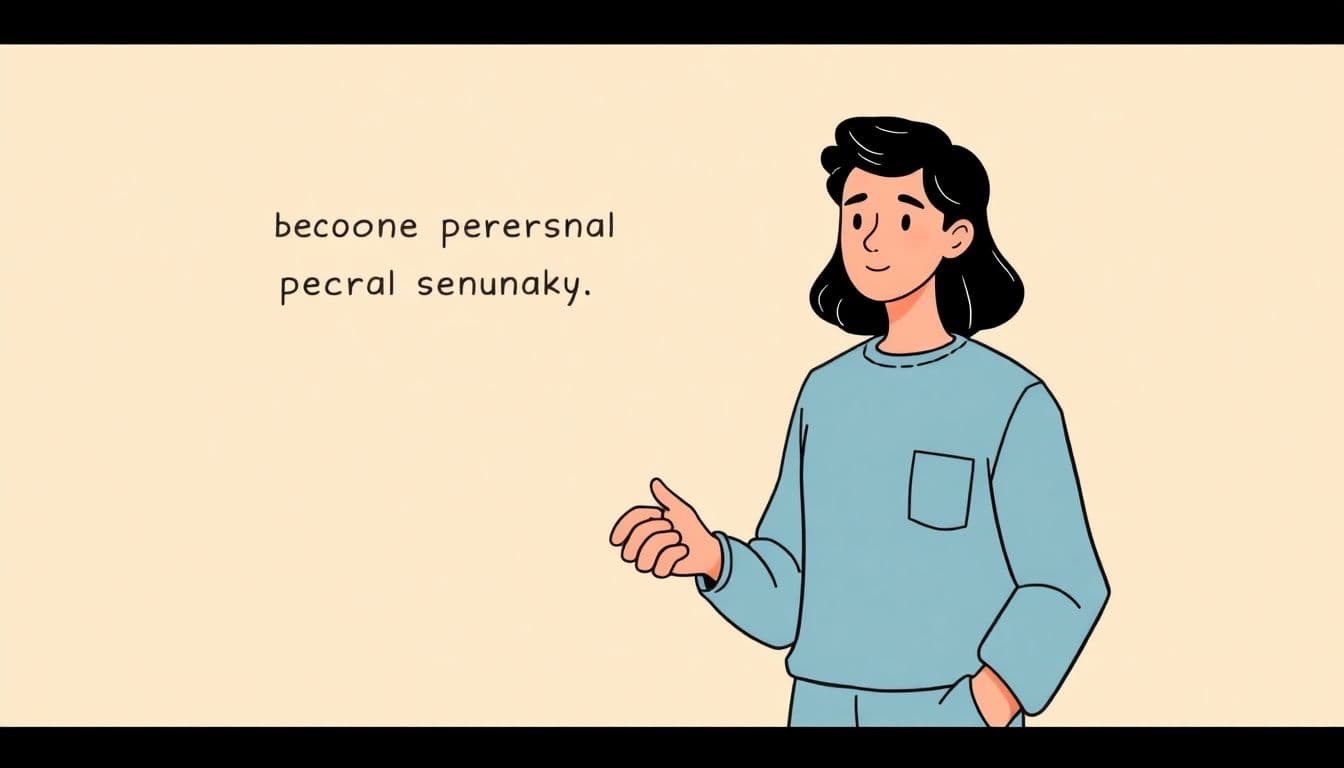Table of Contents
We all know how annoying it is when you’re hooked on a good story and suddenly it ends without a satisfying finish. But here’s the funny thing: cliffhangers, those endings we love to hate, are actually incredibly powerful tools—if done right.
Stick around, because believe it or not, crafting these nail-biting endings can be pretty straightforward once you know the trick. I’ll share some simple steps that’ll help you create cliffhangers your readers won’t stop talking about.
Ready to keep your readers glued to the page? Let’s jump into it!
Key Takeaways
- End scenes during peak suspense to keep readers engaged and eager for what’s next.
- Pick a cliffhanger style—physical danger, a shocking reveal, or deep emotional impact—that matches your story type.
- Keep endings brief, surprising, and without lengthy explanations or detail.
- Present an unresolved conflict or major question at chapter endings.
- Build suspense by using short sentences, sensory details, and delaying crucial information.
- Hold answers back, dropping small clues that keep readers guessing and turning pages.
- Examine cliffhanger endings from skilled authors to discover successful techniques and use them in your writing.

Step 1: End the Scene at the Most Exciting Moment
If you want to keep your readers flipping pages (and who doesn’t?), end your chapter or scene right at the peak of an exciting or suspenseful moment. The idea here is simple: create a question in your reader’s mind that makes them desperate to find out what happens next.
Think about your favorite adrenaline-packed TV series episode ending just as a hero discovers a hidden door or is about to confront a villain. Perfect timing to hit pause—and that’s exactly what a cliffhanger does. Readers will stick around because their curiosity won’t let them stop.
For example, say your detective is exploring an abandoned house, and the floor suddenly gives way beneath their feet. Don’t describe the entire outcome; instead, end the chapter while they’re hanging onto the edge, leaving your readers dying to know whether they’ll make it or not.
This tactic works well in both fiction and nonfiction. Even if you’re writing a self-help book, you can end a chapter hinting at an idea you’ll explain later, building genuine interest as readers anticipate future insights.
Step 2: Pick a Cliffhanger Type That Fits Your Story
Cliffhangers aren’t one-size-fits-all. You need to decide the best type based on your story genre and reader expectations.
Action-packed stories usually benefit from physical peril cliffhangers, where a character’s life or safety is at risk at the end of a scene. Mystery or thriller stories, meanwhile, often use revealing cliffhangers, where a shocking clue or revelation comes to light.
Then there are emotional cliffhangers; they tap directly into your readers’ feelings. Maybe your protagonist finally admits their love, only to get a completely unexpected rejection, leaving readers wondering about the emotional fallout.
According to writing experts at AutomateEd’s horror story plot guide, another cornerstone cliffhanger type for scary stories is the psychological twist or reveal—cutting off just as readers realize the truth behind a spooky or confusing event.
The trick is to match your cliffhanger choice with your narrative tone and genre, ensuring that each chapter closing feels suspenseful but also consistent with what your readers signed up for.
Step 3: Keep Your Ending Short and Surprising
A well-crafted cliffhanger is short, punchy, and unexpected. Avoid dragging out descriptions or explanations at chapter endings—it’ll ruin your dramatic effect and kill the suspense.
Focus on a quick, sharp twist or realization. Maybe your main character opens a letter to discover a shocking family secret, like an unknown sibling or inheritance. Just provide the essential detail and let your readers connect the dots themselves.
A University at Buffalo study from 2023 confirms cliffhangers rank midway in enjoyment compared to happy or sad endings—not too frustrating, not overly predictable—making them perfect for keeping readers intrigued without driving them crazy.
In nonfiction, surprise readers with unusual questions or unexpected hints about powerful upcoming content. For instance, concluding a chapter of your business advice book with, “But the real key to doubling sales isn’t what you think,” nudges readers to eagerly flip the page.
If you’re trying out new ideas to level up your storytelling, check out creative prompt examples at AutomateEd’s realistic fiction writing prompts to find inspiration that hits just right.

Step 4: Focus on a Problem or Conflict
The secret to a juicy cliffhanger is putting a big problem or conflict front and center at your chapter’s end.
Think of something seriously troubling your character, whether it’s an argument gone wrong, a ticking time bomb, or even a hidden identity suddenly uncovered—leave this issue unresolved, and you’ll hook your reader immediately.
For instance, maybe your main character just overheard their business partner plotting sabotage but doesn’t know exactly who else is involved.
Ending the chapter on that suspicion creates tension, raising questions your readers urgently want answers to.
If you’re more into nonfiction, you can use this strategy as well.
Outline a common issue your readers face—say, struggling to get their first book published—and leave the chapter promising a fresh strategy to solve that exact dilemma, like exploring ways to publish your book without an agent.
This gives readers clarity about what’s coming next and gives them a strong reason to turn the page.
Step 5: Use Writing Techniques to Build Tension
Building tension isn’t about loud explosions or dramatic monologues—it’s about subtle tricks to get your reader’s pulse racing.
One craft technique is using short, punchy sentences right as tension peaks; think of them like sharp heartbeats that quicken the pace.
You can also alternate sentence lengths, causing a rhythm that mirrors panic or urgency.
Another tip is to use sensory detail effectively.
If your scene ends with someone trapped in a dark basement, don’t say “it was scary”—instead, describe cold sweat, the creaking floorboards above, or heavy breathing coming from the shadows.
This lets readers experience the anxiety themselves.
Suspense also comes from withholding key info until the last second, revealing a detail readers weren’t quite expecting or abruptly cutting the scene when they’re dying to know more.
For practical writing strategies, you can always experiment with prompts to practice your tension-building skills—for instance, try these engaging winter writing prompts to sharpen your suspense muscle.
Step 6: Delay Answers to Keep Readers Interested
Curiosity is a powerful emotion—keep it alive by deliberately delaying explanations or solutions throughout your story.
Instead of giving immediate answers, sprinkle clues or hints, letting readers piece the puzzle together themselves.
Let’s say your protagonist receives a mysterious text: “I know your secret.”
Instead of immediately revealing who sent it, drag that question out through the next scenes or chapters by adding small clues, red herrings, and more questions.
This keeps readers actively engaged, always guessing, and turning pages to discover the answer.
Nonfiction writers can do the same by raising intriguing questions readers truly care about.
If you’re teaching people how to write compelling characters, you might mention briefly whether a protagonist should be static or dynamic—then wait until the next chapter or section to clearly explain the difference between static and dynamic characters.
This builds anticipation without annoying your reader.
Step 7: Study Examples From Popular Books and Stories
One of the best ways to master a cliffhanger is to study the pros.
Grab your favorite thriller, mystery, drama, or even a gripping nonfiction book, and analyze where and how the author ends their chapters.
Notice patterns—what type of cliffhanger grabs you?
Is it an unanswered question, clear danger, or emotional turmoil?
Maybe check out famous authors like Dan Brown or Gillian Flynn, both recognized for expertly crafted cliffhangers, and take notes on their moves.
The goal is to understand what works and adapt it creatively to your own writing style.
You can also find great ideas by exploring niche-specific advice, such as tools like AutomateEd’s dystopian plot generator, designed for writers looking for creative ways to build suspense in speculative fiction.
Reading and analyzing these examples gives you practical insight, so you can apply effective techniques naturally whenever you sit down to write your scenes.
FAQs
Ending your scene at peak suspense grabs reader attention and creates anticipation for what comes next. It leaves the audience eager to continue and discover the outcomes, helping maintain their interest throughout your narrative.
The best cliffhanger matches your story’s tone and plot. Popular options are revealing a startling secret, an immediate danger confronting characters, a tough choice ahead, or a surprising twist turning the story in a new direction.
Effective ways to heighten tension include short, sharp sentences; vivid descriptions of danger or conflict; withholding key information from readers; strong character emotions; and raising the stakes or risks involved for characters.
Studying cliffhanger techniques in successful books helps identify storytelling methods that engage audiences effectively. It lets you learn by seeing proven strategies in action and adapt impactful storytelling devices to your own narrative style.



